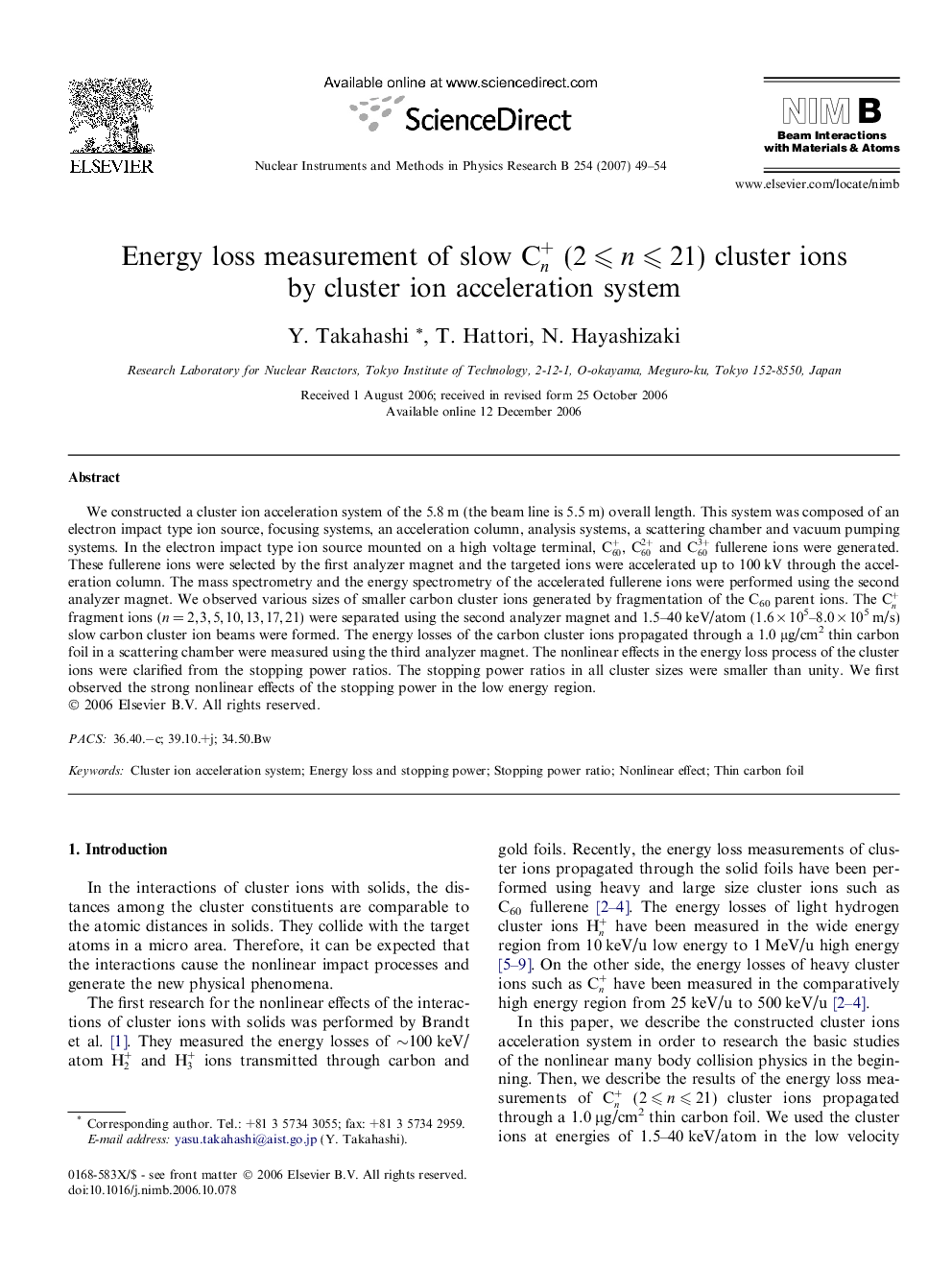| Article ID | Journal | Published Year | Pages | File Type |
|---|---|---|---|---|
| 1685278 | Nuclear Instruments and Methods in Physics Research Section B: Beam Interactions with Materials and Atoms | 2007 | 6 Pages |
We constructed a cluster ion acceleration system of the 5.8 m (the beam line is 5.5 m) overall length. This system was composed of an electron impact type ion source, focusing systems, an acceleration column, analysis systems, a scattering chamber and vacuum pumping systems. In the electron impact type ion source mounted on a high voltage terminal, C60+, C602+ and C603+ fullerene ions were generated. These fullerene ions were selected by the first analyzer magnet and the targeted ions were accelerated up to 100 kV through the acceleration column. The mass spectrometry and the energy spectrometry of the accelerated fullerene ions were performed using the second analyzer magnet. We observed various sizes of smaller carbon cluster ions generated by fragmentation of the C60 parent ions. The Cn+ fragment ions (n = 2, 3, 5, 10, 13, 17, 21) were separated using the second analyzer magnet and 1.5–40 keV/atom (1.6 × 105–8.0 × 105 m/s) slow carbon cluster ion beams were formed. The energy losses of the carbon cluster ions propagated through a 1.0 μg/cm2 thin carbon foil in a scattering chamber were measured using the third analyzer magnet. The nonlinear effects in the energy loss process of the cluster ions were clarified from the stopping power ratios. The stopping power ratios in all cluster sizes were smaller than unity. We first observed the strong nonlinear effects of the stopping power in the low energy region.
